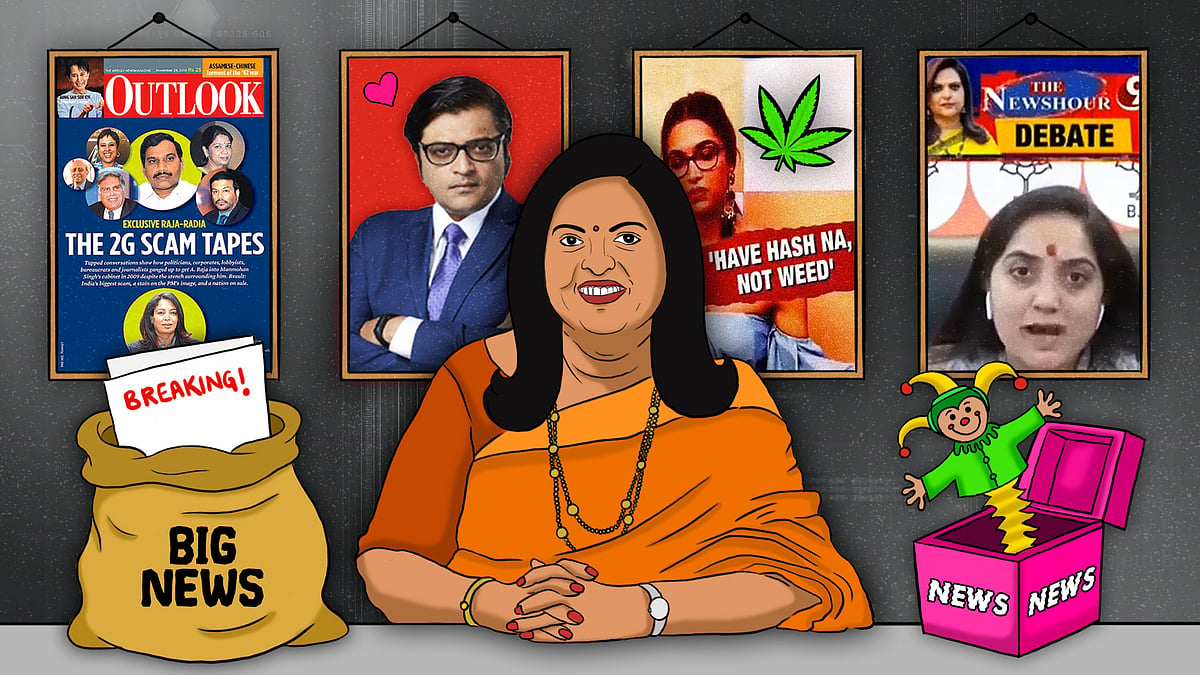A wedding and an NYT oped spotlight India’s contradictory ideas on press freedom
And why some journalists receive preferential treatment over others.
Democracy is a chair with four legs – legislature, executive, judiciary and media. For the chair to keep its balance, each leg must maintain a certain distance from the other. If one leg wobbles, it’s enough to bring down whoever’s sitting on the chair.
And what if the distance between the two legs decreases? The person seated still falls.
In a way, this illustrates the state of India today.
In just one week, the Indian government showcased two opposite stances concerning the media. First, that it abhors Indian journalists writing for foreign publications, especially critical pieces. Second, that the BJP-led government loves the Indian media (not all, but some).
On March 10, information and broadcasting minister Anurag Thakur openly accused the New York Times of “spreading lies about India and our democratically elected Prime Minister Shri Narendra Modjiji”.
Thakur was referring to an opinion piece in NYT by Anuradha Bhasin, editor in chief of Kashmir Times. Her piece spoke of the crackdown on press freedom, ground realities, and the condition of journalism in Kashmir. Among the many critics, Thakur was the loudest in condemning the article, calling it “mischievous and fictitious”.
On the other hand, prime minister Narendra Modi last week attended the wedding of one Sidhant Kumar, whose mother is Times Now group editor and anchor Navika Kumar. The prime minister was in attendance along with a constellation of other ministers, including defence minister Rajnath Singh, home minister Amit Shah, and finance minister Nirmala Sitharaman.
Modi has attended several high-profile weddings since 2014 when he was first elected prime minister. These include the weddings of Abhishek Manu Singhvi’s son in 2015, Lalu Prasad Yadav’s daughter in 2015, Amit Shah’s son in 2015, Nitin Gadkari’s daughter in 2016, and Bhupender Yadav’s daughter in 2022. He also attended cricketer Virat Kohli and actor Anushka Sharma’s reception in 2017, and Bollywood actor Priyanka Chopra and singer Nick Jonas’s reception in 2019.
So, why is Modi attending Navika’s son’s wedding of concern?
Because the other weddings he attended were not associated with institutions tasked with monitoring and regulating the democratic process – meaning the media. This also flags the government’s preference for particular journalists and media outlets. While Bhasin’s office was sealed by authorities in October 2020 and is “barely functioning now”, Navika in 2022 was named in an FIR during the Nupur Sharma row, when she allowed a BJP spokesperson on her primetime show to make derogatory comments about the Prophet.
Navika has also been at the centre of many controversies for her remarks during the farmers’ protests, anti-encroachment drives in Delhi, and the citizenship law protests. She is a part of the Indian media ecosystem, which is frequently criticised for its promotion of hate speech and pro-governing party viewpoints.
For a democracy to function at its full potential, the media has a duty to provide a forum of debate, inform citizens of good and bad news, and play a watchdog role instead of being the government’s ally. Perhaps Thakur does not realise this. The fact that Bhasin chose a foreign publication for such a piece is testament to the condition of Indian journalism.
In a conversation over the phone, Bhasin told me, “I knew that no Indian media house would have agreed to publish it. But getting published in a foreign outlet was not a conscious choice. It was probably to get the word to the maximum number of people.” And people read it, including the I&B minister.
The piece you are reading now was also turned down by Kashmir-based media organisations that cited “current circumstances” as the reason for rejection.
Thakur also said the government does not subscribe to the views and country ranking of foreign organisations, such as the World Press Freedom index. Meanwhile, the proposed amendments to India’s IT rules may make the Press Information Bureau the arbiter of “fake news” in India. So, on what basis does Thakur claim press freedom in India as “sacrosanct as other fundamental rights”?
As an Indian journalist studying in one of the oldest journalism schools in the world, I’m clueless about the definition of journalism back home. Perhaps the four-legged chair is no longer “for the people” but merely a tripod – executive, judiciary and media – holding up the legislature.
 From print to primetime: The making of Navika Kumar
From print to primetime: The making of Navika Kumar 